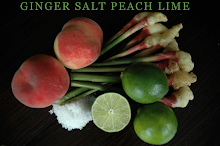Saturday I went skiing for the first time in three years. It was downhill, not my favorite cross-country, but I braved it anyway. I'm afraid of speed and falling, so you can see the dilemma. I couldn't help myself. Winter without snow seems a waste to me, like crackers without cheese. Or life without cheese. I needed to be outside, warm in the cold. My friend encouraged me to try the hip new short skis that all the kids are wearing these days. I did as she bid, managed to do half-a-dozen easy runs without falling, and declared her a goddess. After all, she also has introduced me to eyelash extensions. Another story for another day.
Sunday morning I was still glowing. And I was also pouting because the snow stayed in the mountains and the wind was whipping cruelly around Tokyo. I foraged in the fridge and found two negi (Japanese-style leeks with more white than green) and a kilo or so of potatoes. I've made potato-and-leek soup about a dozen times in my life, but I've never been fully satisfied with the results. Still high and hungry, I wasn't going to waste time going to the store.
I know potato-and-leek soup is supposed to be all about the potatoes and leeks, but somehow that's never been enough. Julia says use only water, plus a bay leaf, thyme, some salt. I still trust her on many, many things. But with potato soup, my tongue craves a little more.
I decided to doctor. White pepper, a good knob of butter, a healthy half-teaspoon of ground ginger.* It simmered on the stove and made the house smell like potato pancakes. That, my friends, is a good smell. After everything was soft but just short of mushy, it all went through the blender. Three (ok, four) ladles went into the bowl. Then I got to thinking. White sesame seeds. What's life without a little garnish? It'd be like winter without the snow.

Potato-and-leek soup with sesame garnish
2 leeks, preferably with lots of white, cleaned and sliced into rounds
2 pounds white potatoes, peeled and cubed
1/2 teaspoon sea salt
3 tablespoons olive oil
3 tablespoons butter
1/2 teaspoon ground white pepper
1/2 teaspoon ground ginger
1 quart of organic, low-sodium chicken stock (or homemade)
5 to 6 tablespoons of white sesame seeds
toasted sesame oil
Heat olive oil and butter in soup pot over medium high heat until melted and hot, but not browning. Add leeks and salt and saute for about 10 minutes until soft. Try not to brown. Add potatoes and stir. Let them fry a little while you add the pepper and ginger. After two or three minutes, add stock. Bring to a simmer and let cook for 20 to 30 minutes. When the potatoes are fork tender, turn off the heat. Blend in batches. Be careful to fill the blender pitcher only 1/3 full; hold a kitchen towel over the cover when you blend. The hot soup can spurt all over.
Once it's all blended, return to the stove and keep warm. To serve, ladle soup into each serving bowl and top with ground sesame seeds (probably about a teaspoon per bowl) and a drizzle of sesame oil.
*If you ever want to test your powdered ginger to see if it's still fresh, it's probably not the best idea to hold the little canister directly under your nose and inhale as if you hadn't had a decent breath in an hour or so. Tasting, in hindsight, might prove a safer option.



